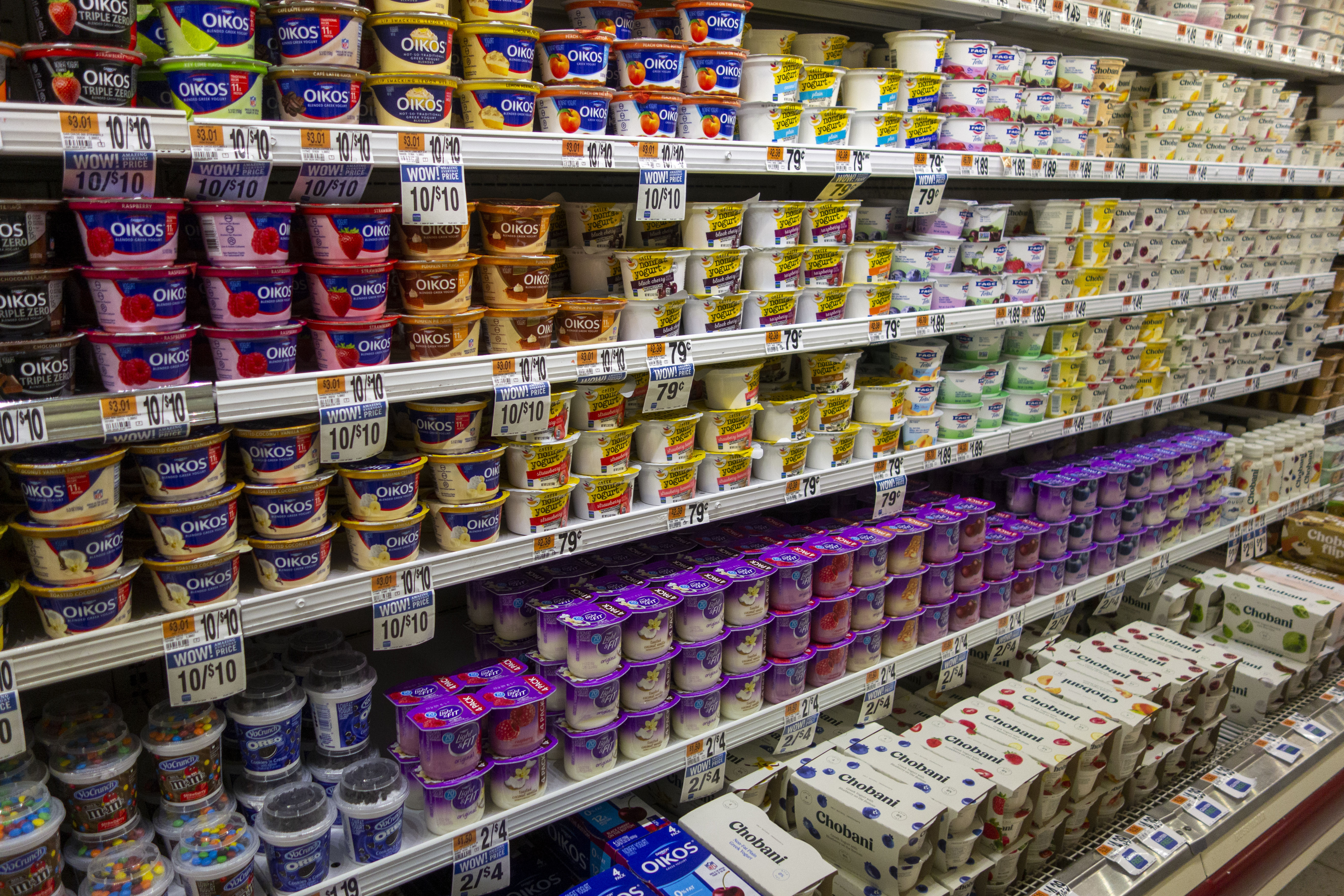At Danone, the hunt never ceases for the next big yogurt
Several brands of yogurt fill the shelves at a grocery store January 10, 2019 in New Rochelle, New York. (Don EMMERT)
White Plains (United States) (AFP) – At its pilot plant north of New York City, Danone’s researchers have the machinery and ingredients to dream up just about any kind of yogurt.
But for the company, which markets between 25 and 40 new products a year in North America, the recipe for innovation begins outdoors in the open air.
To uncover a new idea, “you have to understand how people are eating,” said Jeffrey Rothman, a Danone marketing executive for North America.
And to spot major trends, the company has to go into homes, open refrigerators and talk to consumers about their eating habits, study grocery store aisles and ask grocers how tastes are changing.
Then researchers are left to work up the products and nutritional properties that will please the most consumers or simply fill a gap in the company’s product line.
The recent US launch of the almond-milk-based “Good Plants” line responds to the rise of “flexitarians,” semi-vegetarians seeking to limit their animal protein intake.
Finding a technical solution to the latest consumer desire is not always a cinch: less sugar and fewer calories, more non-dairy and children’s products, or fancier flavors like “lemon tart.”
For Danone, it took some doing to develop the 5.3-ounce (150 gram) Greek yogurt with just two grams of sugar — dubbed “Two Good.”
After a few attempts in a test kitchen, “we found a clever way of straining and removing as much sugar as possible through a slow-strain process,” said Thierry Saint-Denis, head of research and innovation at Danone North America.
– We know our yogurt –
A patent application is now pending.
The “aha!” moment is not always immediate but “Danone has been making yogurts for close to a century now, for 70 years in the US,” he said.
“We know how to make different types of yogurt, selecting the right active cultures, controlling the fermentation time, etc.”
On a small scale, the White Plains facility maintains the industrial equipment needed to make yogurt, from pasteurization to fermentation and the various additives.
A handful of technicians operate the machinery and keep an eye on yogurt batches in progress.
In a large refrigerator live 30 to 40 different cultures that researchers can choose from and combine. Fresh milk arrives every Monday.
Yogurts developed here are then tested by different panels: sometimes by professionals trained to describe the sweetness, texture or taste, sometimes by consumers from a target demographic, sometimes by employees from the company’s offices nearby.
Going from idea to grocery store shelf can take less than three months. Or three years. It all depends on the technical challenge, the chosen packaging and the suppliers needed.
The company, which has 15 plants in North America, also sometimes attempts to adapt products sold elsewhere.
Marketed in 70 countries, the Activia line keeps the same base elements but the textures, flavors and sizes vary with the local palate.
While the French are partial to vanilla, Americans like peaches, the Spanish like kiwis and Brazilians like papaya-oat flavor.
Disclaimer: This story is published from a syndicated feed. Siliconeer does not assume any liability for the above story. Validity of the above story is for 7 Days from original date of publishing. Content copyright AFP.


